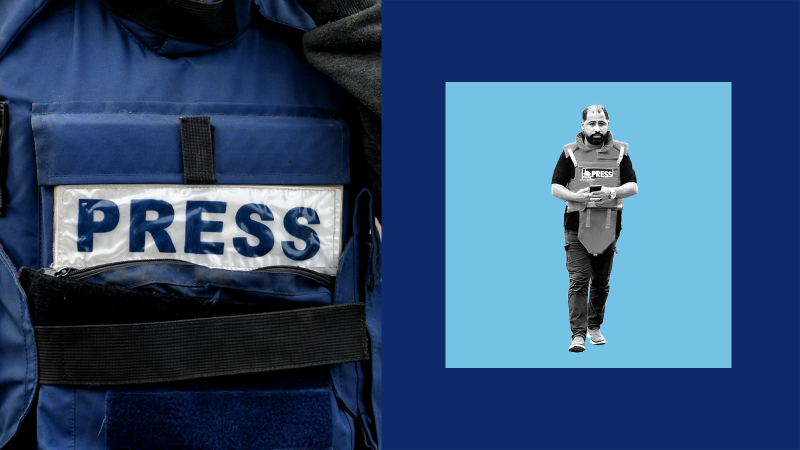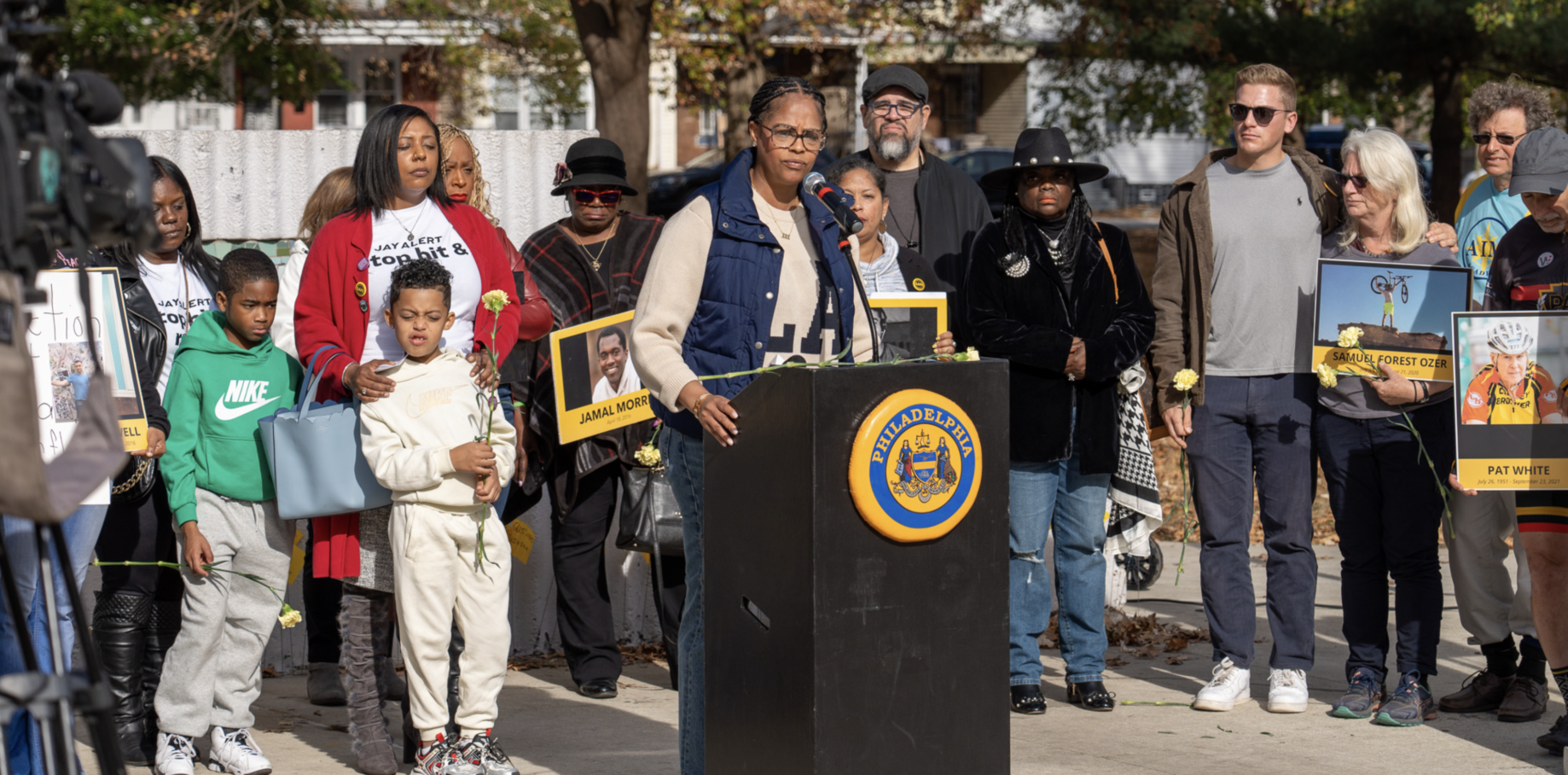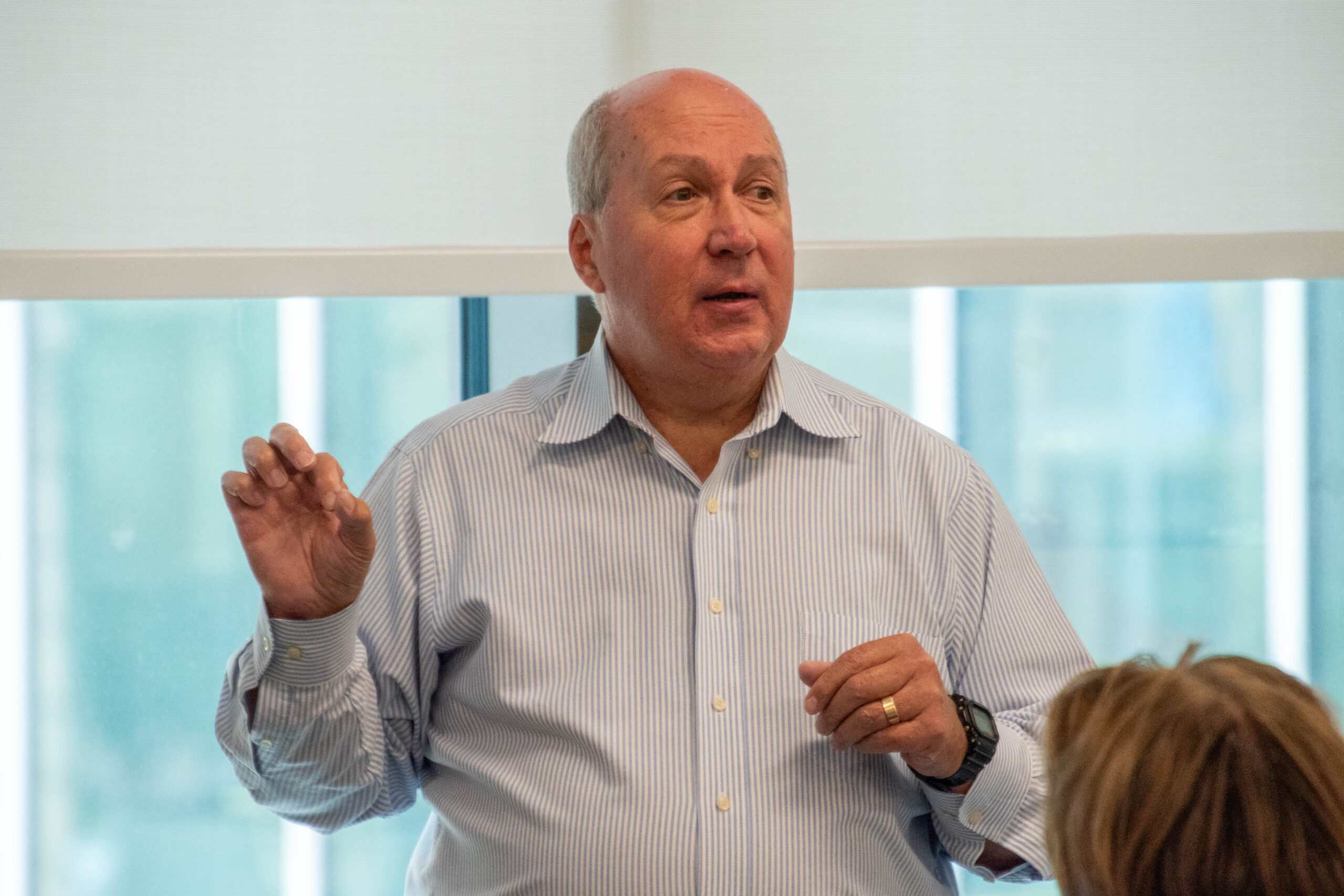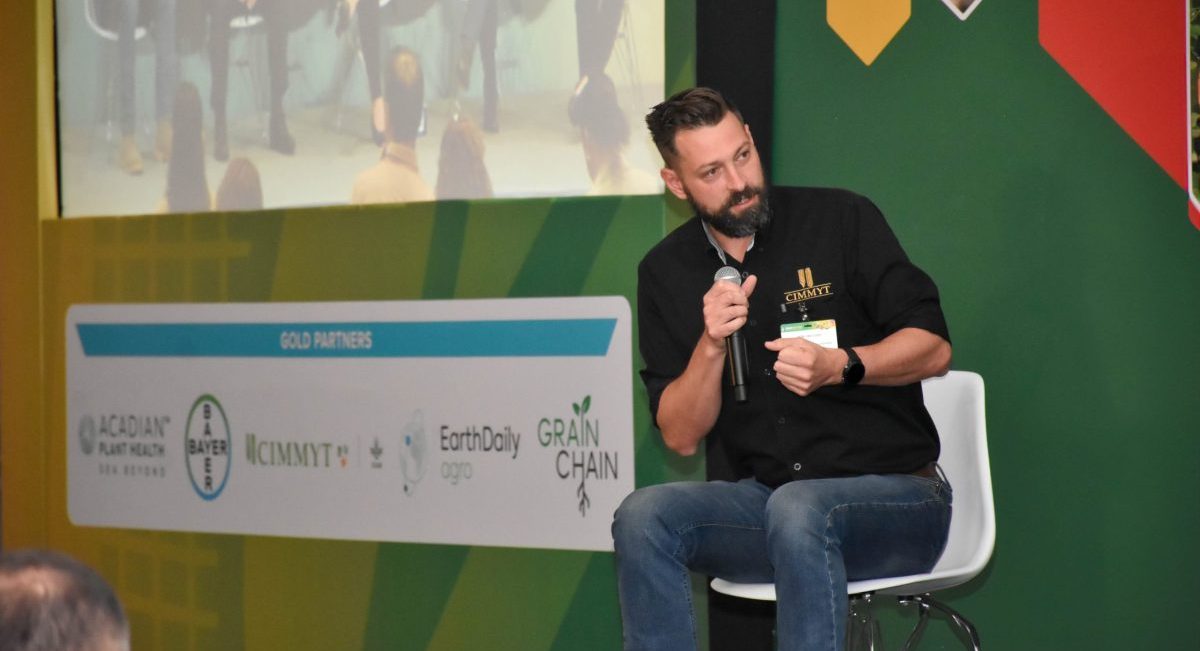CNN
—
“Whoever stays until the end, will tell the story. We did what we could. Remember us.”
Dr. Mahmoud Abu Nujaila scrawled these farewell words in blue ink on a whiteboard in Al-Awda Hospital, in Jabalya, on October 20, according to Médecins Sans Frontières (Doctors Without Borders).
When Israel launched its military offensive in Gaza after the Hamas-led October 7 attacks, many local journalists did stay – risking their lives to tell the stories of their people. After more than 200 days of fighting, Israeli bombardment has turned neighborhoods into rubble. Families have been torn apart by deaths and forced displacement; the threat of starvation looms. At the same time, 129 of the 250 hostages seized from Israel by Hamas remain captive in the territory, of whom at least 33 are thought to be dead.
Trapped in the strip alongside their fellow Gaza residents, Palestinian reporters have become the eyes and ears of those suffering under the shadow of war. And with foreign media largely unable to enter, it is their photos, footage and reporting, often gathered at great personal risk, that have shown the world what is happening.
At least 97 journalists and media workers have been killed since October – 92 of whom were Palestinian – according to the Committee to Protect Journalists (CPJ). This makes it the deadliest period for journalists since 1992, when the CPJ started collecting data. Gazan journalists told CNN they are haunted by their colleagues’ deaths, as they balance the emotional labor of covering the war with trying to protect their families.
Displaced reporters working in makeshift tents risk exposure to Israeli strikes. Some say they were forced to flee their homes without equipment or protective gear, instead relying on mobile phones to show the world what is happening. Others must travel to higher ground when uploading footage, in an effort to bypass power outages and communications disruptions as Israeli shelling persists.
Images of Al-Jazeera’s Gaza bureau chief Wael Al-Dahdouh shaking with grief after 12 family members were killed in an Israeli strike in central Gaza last October became symbolic of the plight of journalists there.
“We are covering the war on Gaza because this is our journalistic duty. It is entrusted upon us,” said 31-year-old Mariam Abu Dagga, a photojournalist for the Independent Arabic displaced in the southern Gaza city of Rafah. “We challenged the Israeli occupation. We challenged the difficult circumstances and the reality of this war, a genocidal war.”
Human rights agencies have repeatedly called for the protection of journalists in the enclave. In February, UN experts warned that “targeted attacks and killings of journalists are war crimes.”
Releasing its annual Press Freedom Index on Friday for World Press Freedom Day, Reporters Without Borders warned the past year marked “a clear lack of political will on the part of the international community to enforce the principles of the protection of journalists.” The war in Gaza saw “a record number of violations against journalists and media” since October, according to the report. Palestine – the term the organization uses for the Palestinian territories, and which is ranked 157th out of 180 countries and territories surveyed – is the deadliest region for journalists.
The Israel Defense Forces (IDF) did not answer CNN’s questions regarding the allegations made by several journalists over threats to the safety of reporters working in the Gaza Strip.
The IDF told CNN it could not comment on allegations of targeted attacks without geographic coordinates and the specific time, but provided CNN with a statement it has often used during the war in Gaza. CNN provided names, locations and dates for the strikes in question.
“In response to Hamas’ barbaric attacks, the IDF is operating to dismantle Hamas military and administrative capabilities,” the IDF said in a statement. “In stark contrast to Hamas’ intentional attacks on Israeli men, women and children, the IDF follows international law and takes feasible precautions to mitigate civilian harm including journalists. The IDF has never, and will never, deliberately target journalists.
“Given the ongoing exchanges of fire, remaining in an active combat zone has inherent risks. The IDF will continue to counter threats while persisting to mitigate harm to civilians,” the statement added.
Israel launched a military assault on Gaza on October 7 after the militant group Hamas, which governs Gaza, killed at least 1,200 people in Israel and abducted more than 250 others.
Israeli attacks in Gaza have since killed more than 34,600 Palestinians and injured more than 77,800 people as of May 1, according to the Ministry of Health there. Of those killed, about seven in 10 are women and children, the ministry said. CNN cannot independently confirm the figures due to the lack of international media access.
“Whenever a journalist is targeted, we ask ourselves who among us will get their turn of being targeted tomorrow,” said Abu Dagga. “We don’t have cover and we don’t have security.”
Since October, Abu Dagga has spent every day in Gaza wondering if it will be her last. Still, she does not leave, despite making the gut-wrenching decision to send her 12-year-old boy to live with his father in the United Arab Emirates. “The war is the only thing that separated me from my son,” she told CNN.
Abu Dagga says she sent him away for his safety after documenting the deaths of children killed by Israel’s bombardment. As of April 30, Israeli attacks in Gaza have killed more than 14,100 children, the Ministry of Heath said.
Palestinian media workers provide a critical window into the horrors of Israel’s offensive in Gaza. The few foreign journalists who have been allowed to enter the enclave have primarily embedded with the IDF and may have had to submit their footage to the military for security review, although maintaining editorial control. Both Israel and Egypt, which control Gaza’s borders, have so far refused to give international journalists unfettered access to the strip, saying that they cannot guarantee their safety.
Abu Dagga says her parents in northern Gaza worry for her survival when she goes out to work, after hearing about the many colleagues she has lost during the war.
Others have evacuated, grappling with the heartbreak of leaving relatives behind, while still working to tell Gaza’s story.
After nearly seven months of war, Abu Dagga told CNN that she, too, wants to leave. “There is no place for us to live,” she said. “We have been subjected to repeated shelling and we are still being targeted.”
Like Abu Dagga, local photojournalist Mohammad Ahmed treads the line between life and death.
Shrapnel pierced his leg following an Israeli attack on a building in Jabalya, in northern Gaza, on December 17, Ahmed recalls. Clouds of dust filled the air, as people screamed frantically.
The photojournalist for Turkish state broadcaster TRT told CNN he had been traveling through the neighborhood, after being displaced from the local refugee camp. His protective press vest absorbed a hit to his stomach, he says. But doctors could not remove the shrapnel lodged in his upper right thigh.
“I started to shout that I had been injured. Nobody was able to hear me,” said Ahmed. “I saw people lying on the street… parts of dead bodies were scattered around.”
The father-of-three says he is tormented by repeatedly documenting scenes of war, whether it be children calling for help from under the rubble, or injured Palestinians flooding into a hospital following an Israeli strike. Sometimes, he says, he must stop filming and let his emotions out.
“I am also a human,” Ahmed said. “I would stop filming and try to find an empty place to cry… These scenes affect us immensely because those are our people, and they are human, and they are like our children.”
He has not yet met his two-month-old son, Adnan. His wife, then pregnant, and two daughters fled first to Rafah and then to Egypt in November. His parents and siblings have been displaced across the strip, he says. But there is little time to grieve for what’s been lost.

Photojournalist Mohammad Ahmed visits the ruins of his home in Gaza City, which was destroyed by a missile.
“Given the nature of my job, I knew I wouldn’t be available beside my family during the war… I was sure this war was going to be bigger than us all,” he said.
For others, the risk of losing their family meant they felt no choice but to leave Gaza.
Ibrahim Dahman and his young family were displaced multiple times as bombardment intensified around their home in Sheikh Radwan, northern Wadi Gaza. The CNN producer drove desperately further south along with his pregnant wife, Rasha, and two children – Zeid, now 11, and Khalil, 7 – under the distant echo of Israel’s aerial campaign.
“This was a huge burden on me,” Dahman, 36, told CNN last month.
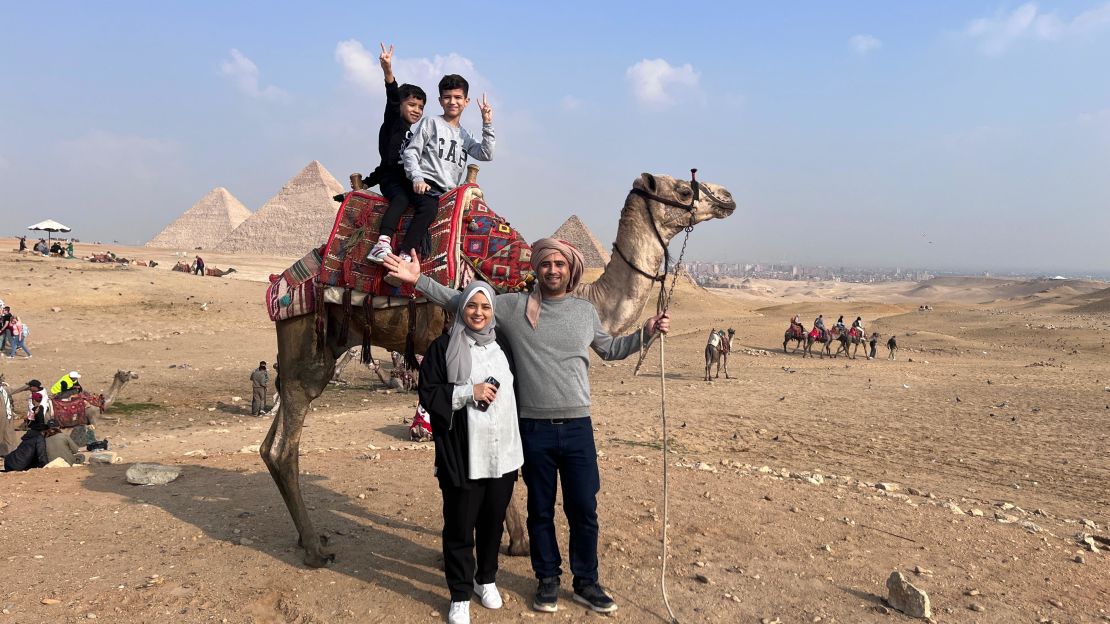
In November, he and his family evacuated to Cairo, in neighboring Egypt. “When we hear the sounds of civilian aircraft in Cairo, we panic,” he said. “I was forced to leave to protect my children and my wife. We left the rest of my family in Gaza, who are still suffering every day.”
As Dahman continues to document the war for CNN, more than 40 relatives from his mother’s and father’s families have been killed by Israeli strikes. His apartment in Sheikh Radwan has been reduced to debris – erasing precious memories, including photographs of his grandparents and gifts from friends.
“What motivates me to cover the war in Gaza is that I was born in Gaza. I am a son of Gaza. I lived there, studied there, and worked in Gaza for years,” he told CNN.
Surviving journalists told CNN they are determined to honor the legacy of their colleagues who have been killed. The editor-in-chief of Al-Khamsa news website, Saeed Al-Taweel, was killed by an Israeli airstrike on October 10, in the west of Gaza City, according to the Palestinian news agency Wafa. A colleague who had sheltered with Al-Taweel on the night he was killed, Alaa Abu Mohsen, said Al-Taweel had gone to film the Hajja tower in Gaza when it was hit by a strike.
“I walked to find Saeed, and he was lying on the ground at the crossroads that connects to Phoenix and Hajja… After that, I transferred his body to his family in Rafah,” Mohsen said.
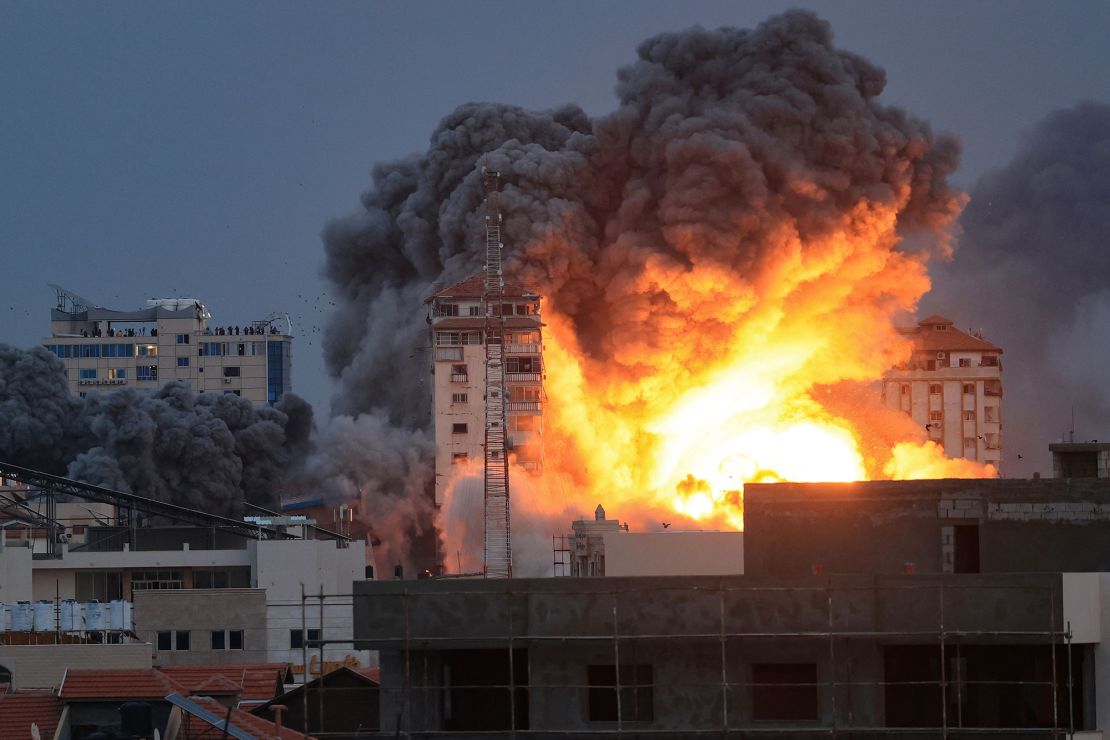
Al-Taweel was famed among Palestinians in Gaza for his morning show, “Akhabr ’Arrei,” meaning ‘news on an empty stomach’, according to Saba Al-Jaafrawi, 32, a close friend and journalist. She described him as a “kind and generous person who took the initiative to do God’s deeds and help people in need.”
“We used to go to work early in the morning and hear people talking about his morning news show… You would hear people say, ‘Saeed wrote” and ‘Saeed said,’” Al-Jaafrawi told CNN. “Losing Saeed was an immense loss both on the journalistic level and on the societal level.
The fate of at least two other Palestinian journalists remains unknown, according to the CPJ.
Thirty-one-year-old Nidal al-Wahidi, a photojournalist, has not been heard from since he was detained by Israeli forces alongside fellow photojournalist Haitham Abdelwahed, 25, while reporting on the Hamas-led October 7 attacks into southern Israel, according to a report by Amnesty International in December and testimony from his cousin provided to CNN. Israeli authorities have refused to disclose their location or the legal grounds for their arrest, Amnesty said, adding that it was not known whether they were dead or alive.
Al-Wahidi had travelled to the Erez/Beit Hanoun checkpoint to film the attacks, Amnesty International said. Major international news organizations, like Getty Images, purchased his photos.
CNN asked the IDF to disclose the whereabouts of Al-Wahidi and Abdelwahed, the reasons for their arrest and their current condition. The IDF did not provide a response.
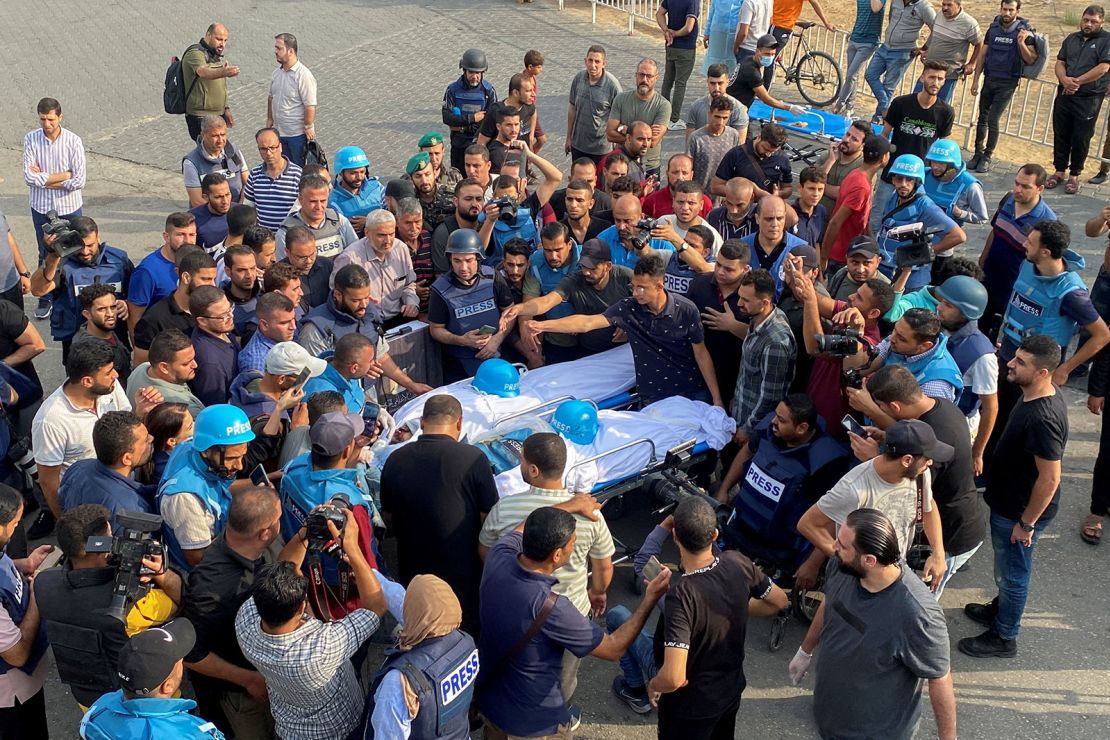
Al-Wahidi’s cousin, Fadi Wael Abdel Karim Al-Wahidi, who is also a journalist still working in Gaza, said the family had identified Nidal based on photos released by the IDF of people detained on October 7.
“So, we went back to the Red Cross and told them: ‘This is a picture of Nidal, and his family recognized him,’” Fadi told CNN. He said the Red Cross told them the IDF had not provided information about people detained on October 7.
CNN reached out to the IDF about the allegations made by Fadi.
Fadi, 24, described Nidal as a “family figure” who was “very kind.” He had worked alongside his cousin, he said, recalling that Nidal was dedicated to his job and knew “the time for laughter was for laughter, and the time for work was for work.”
Speaking to CNN, Fadi had one message for his cousin. “I swear to God, we missed him. We missed him so much. Not only me, but my entire family hopes that Nidal will return because we are very fond of him. We hope that God will bring him back to us safely.”
Whether they report from within the enclave, or elsewhere, Palestinian journalists told CNN they could not turn away from the horrors unfolding in Gaza.
Instead, they do as Nujaila, the doctor at Al-Awda hospital, asked at the beginning of the war — telling the stories of besieged Palestinians inside the territory so they are not forgotten.

